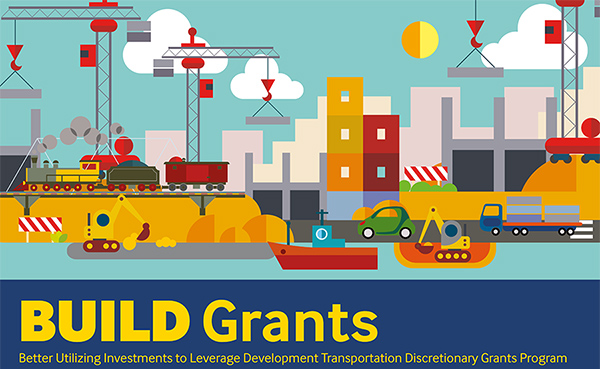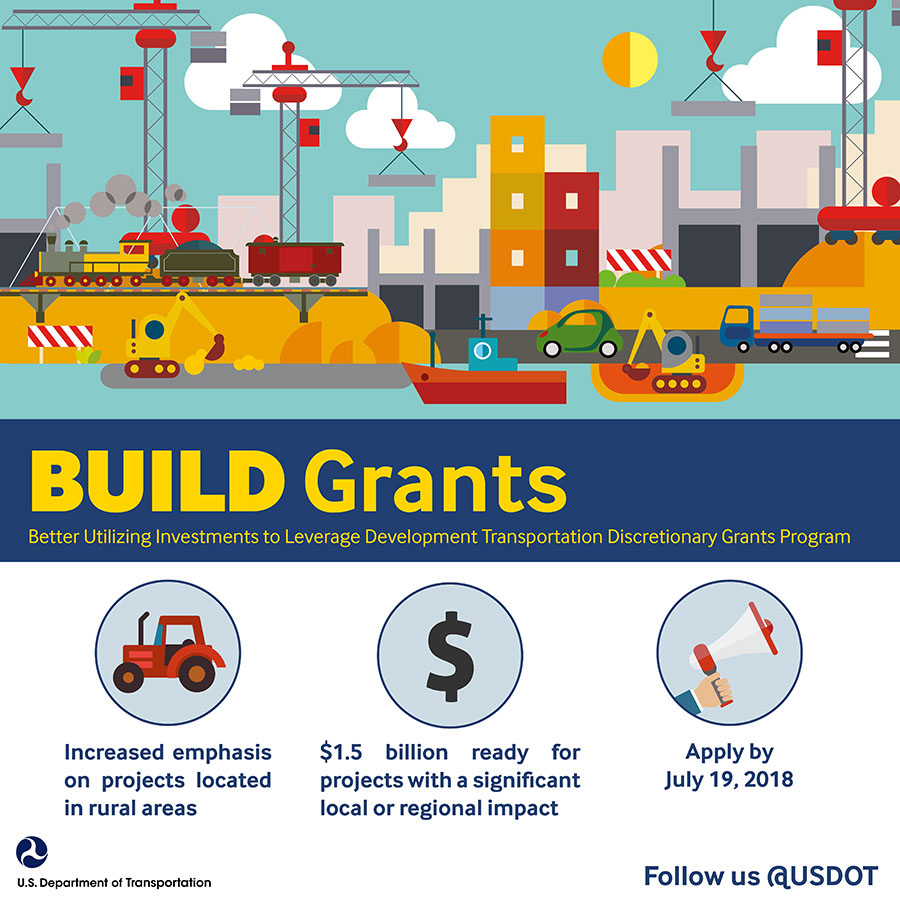BUILD is the new TIGER

Since its inception in 2009 as part of the Obama administration’s American Recovery and Reinvestment Act, the TIGER (Transportation Investment Generating Economic Recovery) discretionary grant program has been a mainstay for transportation funding.
The objective of the TIGER program is to ensure that economic funding is made available for transportation infrastructure projects, and that project spending is monitored and transparent.
When looking at TIGER since 2009, it has provided roughly a combined $5.5 billion to 421 projects in all 50 states, the District of Columbia, Puerto Rico, Guam, the Virgin Islands and tribal communities. These federal funds leverage money from private sector partners, states, local governments, metropolitan planning organizations and transit agencies.
No small numbers to be sure, but based on news issued by the United States Department of Transportation yesterday, the TIGER program may have roared for the final time.
The reason for that comes from a Notice of Funding Opportunity issued by the DOT to apply for $1.5 billion in discretionary funding through the Better Utilizing Investments to Leverage Development (BUILD) Transportation Discretionary Grants program.
In legislative speak, funding for BUILD comes from the Consolidated Appropriations Act of 2018, which has made available $1.5 billion for National Infrastructure Investments through September 30, 2020. For the initial round of BUILD Transportation grants, DOT said the maximum grant award is $25 million, and no more than $150 million can be awarded to a single State, as specified in the FY 2018 Appropriations Act. It also noted that at least 30% of funds must be awarded to projects located in rural areas.
According to DOT, “BUILD Transportation grants replace the pre-existing Transportation Investment Generating Economic Recovery (TIGER) grant program. As the Administration looks to enhance America’s infrastructure, FY 2018 BUILD Transportation grants are for investments in surface transportation infrastructure and are to be awarded on a competitive basis for projects that will have a significant local or regional impact. BUILD funding can support roads, bridges, transit, rail, ports or intermodal transportation.”
In other words, BUILD is the new TIGER. And it sounds a lot like TIGER, right? Well, there is a reason for that: it is to a large degree.
“BUILD Transportation grants will help communities revitalize their surface transportation systems while also increasing support for rural areas to ensure that every region of our country benefits,” said DOT Secretary Elaine L. Chao in a statement.
DOT said that projects for BUILD will be evaluated based on merit criteria that include: safety, economic competitiveness, quality of life, environmental protection, state of good repair, innovation, partnership, and additional non-Federal revenue for future transportation infrastructure investments.
And it added that DOT plans to award a larger share of BUILD Transportation grant funding to projects located in rural areas that align well with the selection criteria than to such projects in urban areas. DOT also pointed out that its notice “highlights rural needs in several of the evaluation criteria, including support for rural broadband deployment where it is part of an eligible transportation project.”
Elaine Nessle, executive director of the Washington, D.C.-based Coalition for America’s Gateways and Trade Corridors (CAGTC), told me that part of the impetus for the creation of BUILD was that TIGER was very much an Obama administration branded program from the American Reinvestment and Recovery Act, and the Trump administration wanted to create its own program.
But, as stated before not much will fundamentally change, with Nessle noting: “It is still going to be a competitive grant program and the eligible cost and project types have not changed under this program. It is the same as TIGER.”
Nessle said CAGTC is pleased that the appropriators have put so much money behind this competitive grant for this round, with the amount of funding at $1.5 billion.
“[This] essentially is tripling the resources and is wonderful because year after year we see that the TIGER program is significantly oversubscribed and so this is getting us a little bit closer to what the needs actually look like across the transportation spectrum,” she explained. “I think that there are a couple of the areas we are interested in and going to be keeping an eye on, of course. We are interested in the freight system and the systems of systems the supply chains rely on are these comprehensive networks and systems where every single piece needs to work, whether that piece of infrastructure is located in a rural or urban area.”
And this notice of funding availability does reflect that DOT plans to award a greater share of funding to projects located in rural areas that align well with merit based criteria in urban areas, she said.
As an organization, Nessle said CAGTC is more concerned with using outcome-based criteria that will look at things like improving travel time reliability and decreasing travel time and increased safety and reduction in negative community impacts regardless of where the project is located.
“We would like to see a program that looks much more at those criteria rather than setting up this proposition or urban vs. rural,” she said. “It is unclear how much goes towards that, but it is certainly outside of the traditional transportation and infrastructure pot that TIGER has previously focused on.”
In many places, especially Inside the Beltway, nothing lasts forever and change is viewed as constant. But even though BUILD is new, many facets of TIGER will remain in certain ways.
BUILD Grants Infographic


Article Topics
Motor Freight News & Resources
Shipment and expenditure decreases trend down, notes Cass Freight Index March trucking tonnage trends down, reports ATA FTR Shippers Conditions Index enters negative territory DAT March Truckload Volume Index sees modest March gains National diesel average, for week of April 22, is down for the second straight week LM Podcast Series: Assessing the freight transportation and logistics markets with Tom Nightingale, AFS Logistics XPO opens up three new services acquired through auction of Yellow’s properties and assets More Motor FreightLatest in Logistics
Shipment and expenditure decreases trend down, notes Cass Freight Index March trucking tonnage trends down, reports ATA FTR Shippers Conditions Index enters negative territory DAT March Truckload Volume Index sees modest March gains National diesel average, for week of April 22, is down for the second straight week UPS reports first quarter earnings decline LM Podcast Series: Assessing the freight transportation and logistics markets with Tom Nightingale, AFS Logistics More LogisticsAbout the Author
Subscribe to Logistics Management Magazine

Find out what the world's most innovative companies are doing to improve productivity in their plants and distribution centers.
Start your FREE subscription today.
April 2023 Logistics Management

Latest Resources














